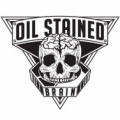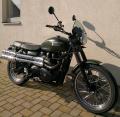Online
Pašreiz MOTOpower skatās 0 viesi un 0 reģistrēti lietotāji.
|
Tēma: Mīti
| Autors | Ziņojums |
|---|
| zazzaa | |  Kopš: 31. Oct 2010
No: Rīga
Ziņojumi: 3326
Braucu ar: Kraftfahrzeuge Trunkenpolz Mattighofen
| Ar Keeway var apbraukt apkārt pasaulei!
-----------------
Vai tas ir droši? -Protams, ka nav. Dažreiz, lai apmierinātu sirdi, jāparkāpj noteikumi. H. Simpsons
|  Offline Offline
| | |
| tipin6 | |  Kopš: 12. Feb 2009
No: Rīga
Ziņojumi: 2235
Braucu ar: vfr750 strīt edišon, dr650 meža kapli un klasisko piedziņu
|
06 Jan 2013, 22:21:57 zazzaa rakstīja:
Ar Keeway var apbraukt apkārt pasaulei!
  stabili! stabili! |  Offline Offline
| | |
| katerhams | |  Kopš: 22. May 2011
Ziņojumi: 380
Braucu ar: TIG`u pa ļumīniju
|
06 Jan 2013, 22:41:17 tipin6 rakstīja:
06 Jan 2013, 22:21:57 zazzaa rakstīja:
Ar Keeway var apbraukt apkārt pasaulei!
  stabili! stabili!
vajag tikai 12 keeway`us 
-----------------
gudrs neesmu, bet protu daudz lasīt un patīk gudri pļūtīt |  Offline Offline
| | |
|
|
| dzosua | |  Kopš: 30. Apr 2008
Ziņojumi: 180
Braucu ar: ZR7
|
06 Jan 2013, 21:51:01 Archy96 rakstīja:
06 Jan 2013, 20:30:35 mexa rakstīja:
jo vairāk degradējas cilvēks jo gudrākas tehnoloģijas tiek ieviestas lai kompensēt to  "mexa" "mexa"
Viedi vārdi, viedi vārdi, drīz būs viedtālrunī aplikācija - kā pareizi dirsu sev noslaucīt, tā lai pirksti papīram cauri
neizskrien 
Slinkums dzen cilveci uz prieksu, t.i. Izdomat arvien jaunas lietas, lai atvieglotu/sarezgitu dzivi.  |  Offline Offline
| | |
| Archy96 | |  Kopš: 22. Apr 2008
No: Rīga
Ziņojumi: 13383
Braucu ar: Husqvarna TE300i, 1290 Super Adventure un TLC120
|
06 Jan 2013, 23:16:05 Niere rakstīja:
06 Jan 2013, 21:51:01 Archy96 rakstīja:
Viedi vārdi, viedi vārdi, drīz būs viedtālrunī aplikācija - kā pareizi dirsu sev noslaucīt, tā lai pirksti papīram cauri neizskrien 
a Tu man apstāsti, kā higiēniski pieņemami nokārtot lielo ģēlu lielpilsētas centrā, sēžot autosā? 
Ir gadījies lielpilsētas centrā sēžot autosā kārtot mazo ģēlu, kura gan beidzās gaužām nehigiēniski - ar salona tīrīšanu, jo ģēlai paredzētais trauks izrādījās stipri par mazu, un tu jau zini kā ir - kad tam maisam gals i vaļā, to apturēt ir grūti 
-----------------
BevelGear Individual Solutions |  Offline Offline
| | |
| drRD | |  Kopš: 21. Oct 2011
No: Ikšķile
Ziņojumi: 164
Braucu ar: CBR1100XX
|
06 Jan 2013, 23:16:05 Niere rakstīja:
06 Jan 2013, 21:51:01 Archy96 rakstīja:
Viedi vārdi, viedi vārdi, drīz būs viedtālrunī aplikācija - kā pareizi dirsu sev noslaucīt, tā lai pirksti papīram cauri neizskrien 
a Tu man apstāsti, kā higiēniski pieņemami nokārtot lielo ģēlu lielpilsētas centrā, sēžot autosā? 
Jāprasa jūrniekiem, parasti saka, ka nav ko mācīt šamējos laivā kakāt. |  Offline Offline
| | |
| Archy96 | |  Kopš: 22. Apr 2008
No: Rīga
Ziņojumi: 13383
Braucu ar: Husqvarna TE300i, 1290 Super Adventure un TLC120
| Nu Tu esi perverss pilsonis, ar bagātu iztēli 
-----------------
BevelGear Individual Solutions |  Offline Offline
| | |
| Niere | |  Kopš: 08. Dec 2010
Ziņojumi: 8114
Braucu ar:
|
07 Jan 2013, 00:05:53 Archy96 rakstīja:
Nu Tu esi perverss pilsonis, ar bagātu iztēli 
ar to gribēju teikt, ka man viedtālrunī iraid ne tikai "kā pareizi atslaucīties", bet izdzīvošanas instrukcijas gadījumiem, kādiem 99% ļautu nav gatavi.
Galu galā, labākās instrukcijas sevis atslaucīšanai jau deva Rablē 16tajā gs. klasiskajā "Gargantija un Pantagriels" - labākie slaucītāji ir mazi kaķēni. 
vienīgais, kas vēl nepatīk viedtālruņa funkcijās - gana drošā līmenī neesmu atrisinājis barošanu bez "ķeguma". |  Offline Offline
| | |
| Niere | |  Kopš: 08. Dec 2010
Ziņojumi: 8114
Braucu ar:
| Mīts:
skaļš izpūtējs palielina motobraucēja drošību arī intensīvā satiksmes plūsmā. |  Offline Offline
| | |
| Rizza | |  Kopš: 05. Nov 2011
No: Zilupe
Ziņojumi: 2101
Braucu ar: zrx1200s un Gaz69 55'
|
07 Jan 2013, 11:19:11 Niere rakstīja:
Mīts:
skaļš izpūtējs palielina motobraucēja drošību arī intensīvā satiksmes plūsmā.
Kad kāds Pid%$ ar klavierēm iebrauc starp auto un sāk gāzēt, bļ#$ tā tik vien gribās attaisīt durvis vai biš uz sānu paraut... cieņas nekādas.
Un arī braucot ar tālajiem, tas pats stāsts..
Pats ieslēdzu ļoti ļoti reti, kad jāsteidzas, starppilsētu lidojumi.
Bet tie kas pa pilsētu braukā ar tālajiem, piedodiet ja varat, bet tas ir kkāds kindergārdens.  |  Offline Offline
| | |
| mexa | |  Kopš: 07. Sep 2012
Ziņojumi: 6888
Braucu ar: VT
| skaļš izpūtējs var papildus pievērst uzmanību, bet nu gāžot krustojumā un neskatoties pa sāniem virsū dajebkurš var uzmaukt, un po uz decibeliem, jo vnk no nekurienes parādās
-----------------
Auto moto elektronikas serviss Krāslavā |  Offline Offline
| | |
| shuttle | |  Kopš: 23. Mar 2012
No: Ogre
Ziņojumi: 786
Braucu ar: Triumph Scrambler Pedal to Metal edition
| ar tālajiem pilsētā, korķī zīmējas ksenonieki, bet par trubu, ja patīk, kā skan putekļsūcējs, tad vienozīmīgi standarta gals  |  Offline Offline
| | |
| Niere | |  Kopš: 08. Dec 2010
Ziņojumi: 8114
Braucu ar:
| Mīts:
"mocisti iedalās jau salauztajos un tādos, kas salauzīsies"
veiksminieki, atsaucās!  |  Offline Offline
| | |
| dusk | |  Kopš: 14. Aug 2009
No: Rīga
Ziņojumi: 1563
Braucu ar: HD FXR & Chevy Astro
|
07 Jan 2013, 11:19:11 Niere rakstīja:
Mīts:
skaļš izpūtējs palielina motobraucēja drošību arī intensīvā satiksmes plūsmā.
Tieši intensīvā satiksmā pilsētā arī palīdz pievērst blondīņu un peņu skatienus spoguļiem.
Arī sastrēgumos reizēm pagazējot var pavērt ceļu. Tomēr labak nekā pīpināt 
Ja kāds, ka Rizza nelaiž, nu neko, es varu arī pagaidīt mazliet, par laimi tādu nav daudz un ar katru gadu paliek mazāk.
-----------------
Veikals Motoland.
Artlērijas 45, Rīga
T. 29255587
www.motoland.lv
|  Offline Offline
| | |
| motoinstruktors | |  Kopš: 01. Dec 2009
Ziņojumi: 934
Braucu ar: ktm LC4
|
08 Jan 2013, 18:31:24 Niere rakstīja:
Mīts:
"mocisti iedalās jau salauztajos un tādos, kas salauzīsies"
veiksminieki, atsaucās! 
...pa 40 gadiem nekas nav lauzts...  |  Offline Offline
| | |
| Niere | |  Kopš: 08. Dec 2010
Ziņojumi: 8114
Braucu ar:
| no maniem vērojumiem:
korķī, lienot starp autosiem, skaļa truba pievērš uzmanību, kad esi ~5m attālumā.
savukārt braucot, moci pamana tikai tad, kad tas ir jau redzams.
vienkārši izplūde vērsta pretēji braukšanas virzienam. |  Offline Offline
| | |
| motoinstruktors | |  Kopš: 01. Dec 2009
Ziņojumi: 934
Braucu ar: ktm LC4
|
07 Jan 2013, 11:19:11 Niere rakstīja:
Mīts:
skaļš izpūtējs palielina motobraucēja drošību arī intensīvā satiksmes plūsmā.
...un dzeltenizaļā veste...  |  Offline Offline
| | |
| dusk | |  Kopš: 14. Aug 2009
No: Rīga
Ziņojumi: 1563
Braucu ar: HD FXR & Chevy Astro
|
08 Jan 2013, 18:53:23 Niere rakstīja:
no maniem vērojumiem:
korķī, lienot starp autosiem, skaļa truba pievērš uzmanību, kad esi ~5m attālumā.
savukārt braucot, moci pamana tikai tad, kad tas ir jau redzams.
vienkārši izplūde vērsta pretēji braukšanas virzienam.
pareizi ,
intensīvā satiksmē 20-60 km/h pa čakeni piemēram, kad pa priekšu auto brauc pa viduslīniju ir bīstami apsteigt pa iekšmalu, kamēr neesi pārliecinajies ka blond vai oldmen vai kepon ir Tevi pamanījis. Skaļas trubas pilsētā starp ēkām labi atstaro skaņu uz visam pusēm , tāka arī priekšā braucošie sāk meklēt skaņas avotu.
Pirms laika, kad man bija V-max ar standarta trubam, bieži vien bija situacijas, "ai neredzēju" .
-----------------
Veikals Motoland.
Artlērijas 45, Rīga
T. 29255587
www.motoland.lv
|  Offline Offline
| | |
| mexa | |  Kopš: 07. Sep 2012
Ziņojumi: 6888
Braucu ar: VT
| man tikai pamatīgi sastiepumi, ka nācās plecu saskrūvēt 
-----------------
Auto moto elektronikas serviss Krāslavā |  Offline Offline
| | |
| Niere | |  Kopš: 08. Dec 2010
Ziņojumi: 8114
Braucu ar:
| Tā kā citā diskursā "Moto degvielas patēriņš" parādās tik populārais mīts par "dramatisko degvielas kvalitātes un patēriņa atšķirību" LV un "Eiropā", pārpublicēju informāciju no Chevron:
~~~~~~~~~~~~~~~~~~~~~~~~~~~~~~~~~~~~~
FUEL ECONOMY
Fuel economy in the U.S. is usually expressed as the number of miles traveled on one gallon of gasoline (miles per gallon, or mpg). Many drivers calculate vehicle mpg by counting the miles driven between fill-ups. Outside the U.S., fuel economy is usually expressed as liters per 100 kilometers (L/100 km).
Because controlling influencing factors is difficult and often impossible, driving on the road is not a reliable way to determine how fuel economy is affected by gasoline composition. A more accurate determination is possible under controlled laboratory conditions. A vehicle is mounted on a chassis dynamometer in a temperature-controlled space and driven through a specified operating cycle.
The weight or volume of the gasoline consumed during the cycle may be measured or the fuel economy may be calculated from the weight fraction of carbon compounds in the vehicle’s exhaust.
Figure 1.3 shows that the average fuel economies of two fleets of vehicles are proportional to the heating values of the gasolines tested.4 This is the relationship predicted by combustion theory. In the test, the newer fleet was composed of 1989 model-year cars and the older fleet included 1984–1985 model-year cars. The test involved two different sets of gasolines(Matrix A and Matrix B) that varied in aromatics content, olefins content, oxygen content, oxygenate type, and several other properties (see page 31). Results show that heating values can be used as surrogates for actual fuel economy measurements when considering the effect of gasoline composition on fuel economy.
Conventional fuels always have varied in heating value. One cause is the formulation differences among batches and among refiners. A survey of 1990–1991 conventional gasolines found that the heating value of summer gasolines varied over an 8 percent range.5 Heating value also varies by grade and by season. On average, the heating value of premium-grade gasoline is about 0.7 percent higher than regular grade because premium grade, in general, contains more aromatic hydrocarbons, the class of hydrocarbons with the highest densities. The heating value of winter gasoline is about 1.5 percent lower than summer gasoline because winter gasoline contains more volatile, less dense hydrocarbons. Oxygenated gasolines (see page 53) have lower heating values because the heating values of the oxygenate components are lower than those of the hydrocarbons they displace. The percentage decrease in heating value is close to the mass percent oxygen in the gasoline. For example, in keeping with federal regulations, gasoline in carbon monoxide nonattainment areas in the U.S. is oxygenated to a minimum of 2.7 mass percent oxygen during four or five winter months.6 The heating value of the oxygenated product is about 2.7 mass percent lower than that of conventional gasoline. In addition, federal RFG and California Phase 3 RFG in federal RFG areas are typically oxygenated year-round to an average oxygen content of about 2 mass percent. The resulting heating values are about 2 percent lower than that of conventional gasoline. California Phase 3 RFG also has limits on distillation temperatures and aromatics content, which has the secondary effect of lowering the density of the fuel. These limits reduce heating value by about another 1 percent.
The gasolines that produced the results displayed in Figure 1.3 were specially formulated to span a wide range of compositions. The compositional variations were much greater than those separating conventional and reformulated commercial gasolines. Thus, the results provide solid evidence that RFG does not exert an unusual effect on fuel economy.
Individual drivers have reported decreases of 10 percent, 15 percent, and even 20 percent in fuel economy when they began using RFG. Not surprisingly, many of the claims are anecdotal. Most drivers do not keep continuous fuel-economy records, so they don’t have a meaningful fuel-economy baseline for the gasoline they previously used. Even with a baseline, a fuel-economy value based on the consumption of a single tank of gasoline can be misleading. Drivers interested in fuel economy should average results over several tanks of gasoline or, better yet, over several months of driving.
Heating Value
Heating Value The heating value (also referred to as energy content) of gasoline is its heat of combustion, or the heat released when a known quantity of fuel is burned under specific conditions. In the U.S., heating value is usually expressed as British thermal units (Btus) per pound or per gallon at 60°F. The international metric (SI) units are joules per kilogram (J/kg) or joules per cubic meter (J/m3) at 15°C. For gross heating value, the water produced by the combustion is assumed to be recondensed to a liquid. For the lower net heating value, the water is assumed to remain a gas. All engines exhaust water as a gas, so net heating value is appropriate for comparing different fuels. Because gasoline is sold by volume, it is customary to express gasoline heating values per unit volume, specifically, Btu per gallon (or J/m3). This is the value that correlates with fuel economy because fuel economy is expressed per unit volume (mpg) in the U.S. or volume per distance (L/100 km) in much of the rest of the world. The densities of the hydrocarbons in gasoline vary over a much wider range from their heating values per unit weight. Consequently, compositional changes that result in density changes are accompanied by changes in heating value per unit volume. If the density of a conventional gasoline decreases, its heating value per unit volume also decreases.
Adding oxygenates to conventional gasoline also decreases heating value.
Oxygenates have lower heating values than hydrocarbons on both unit-weight and unit-volume bases. The amount of decrease depends on the amounts and identities of the oxygenates.
Factors Affecting Fuel Economy
Fuel economy is affected by a vehicle’s size, weight, aerodynamics, fuel delivery system, engine design, and transmission type. These factors remain constant for a specific vehicle.
There are, however, many variable factors that influence fuel economy. As mentioned, the heating value of gasoline is one. Weather conditions, air conditioner use, road conditions, the route driven, traffic, driving speed, and driving style are others. Fuel economy is also affected by the mechanical condition of the car, including the engine tune, wheel alignment, and tire pressure. Some of these non gasoline factors have the potential to cause substantial changes in fuel economy. Table 1.4 lists average and maximum effects published by the U.S. Environmental Protection Agency (EPA).
Carbonaceous engine deposits can build up over time and degrade fuel economy and other performance attributes, but these problems can be reduced with the use of deposit control additives. This subject is discussed in detail in Chapter 6, “Gasoline Vehicles – Deposit Control.”
Winter-related factors can combine to lower fuel economy up to 20 percent compared to summer factors. These include rain or snow on the road, which increases tire resistance.
In addition, for safety a driver may need to slow down to a less fuel-efficient speed. In cold weather, a richer air-fuel mixture is required to start and warm up an engine. Much of the warm-up is done at idle because of the need to defog or defrost windows. Also, in many vehicles, the air conditioner is operated to assist defogging. More energy is required to overcome the resistance created by the higher viscosities of cold lubricants, including engine oil, transmission fluid, and differential lubricant.
Short trips are worse for fuel economy than long trips because a cold engine uses more fuel than a warm engine and requires more energy to overcome the resistance of cold lubricants. Traffic jams and bumper-to-bumper driving exact a heavy toll on fuel economy.
Fuel Economy Road Test
The results of a Wisconsin on-road fuel economy test demonstrate that some of the above factors can have a much bigger effect on fuel economy than a small percentage change in gasoline heating value.

The test was designed to minimize all factors affecting fuel economy except gasoline composition. Fueled with various gasolines, vehicles were driven over the same route of 100 miles (161 kilometers) of urban and suburban roads. The fuel economy of each vehicle was measured four times for each gasoline: once in the morning and afternoon of the same day and again in the morning and afternoon of one day a week later. In some cases, a vehicle was driven by the same driver both days. Other vehicles were driven by more than one driver. When the results for the two weeks were compared, most of the fuel economies in the second week were lower. The differences were greater than 10 percent for a quarter of the car-fuel combinations. Two factors that probably contributed to the week-to-week differences were driver changes and a weather change.
Ambient temperatures were lower in the second week; on some days, noontime temperatures were as much as 17°C (30°F) cooler than the average noontime temperature of the preceding week.
The gasolines used in the Wisconsin test were commercial gasolines, either a conventional gasoline or a federal RFG oxygenated with methyl tertiary butyl ether (MTBE), ethyl tertiary butyl ether (ETBE), or ethanol (EtOH). When the results for all the road tests of all the vehicles were combined, the average fuel economy of the three oxygenated federal RFGs was 2.8 percent lower than the average fuel economy of the conventional gasoline. This value was much less than the 10 percent week-to-week difference for some of the car-fuel combinations but within the range predicted by the differences in the gasolines’ heating values.
OTHER PERFORMANCE FACTORS
Many gasolines available around the world contain oxygenates. In engines without closed-loop feedback systems, oxygenated gasoline leans the air-fuel mixture. Fuel leaning can cause some degradation in driveability, depending on an engine’s calibration.
Without fuel additives, deposits form throughout an engine’s intake system, including in the fuel injectors, carburetor, intake manifold, and intake ports and on the intake valves. Deposits can be very deleterious to engine performance, degrading driveability, decreasing power and fuel economy, and increasing emissions.
Today, we commonly discuss gasoline or gasoline powered vehicles and their impact on air quality. A number of metropolitan areas in the U.S. fail to meet one or more federal air quality standards. In some of these areas, on-road vehicles are responsible for more than half of the emissions that either primarily or secondarily cause violations of air quality standards.
Other major metropolitan areas throughout the world also are experiencing serious air pollution problems.
This chapter explains who regulates emissions and how and why they do it. It also explains which emissions come from vehicles and how those emissions are formed. Finally, it explains how emissions are affected by gasoline characteristics and how gasoline is being reformulated to help reduce emissions.
The explanations are complicated because they involve complex regulations and complex science. As a consequence, keeping this review short and simple is challenging. The numerous acronyms and abbreviations are unavoidable; both government regulation and science use them heavily.
ja nu kas: http://translate.google.com/ |  Offline Offline
| | |
|
|